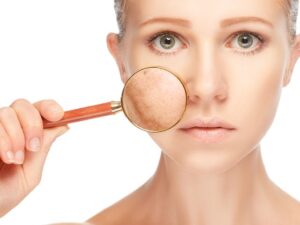The skin is the largest organ of the human body. Our clothes form our “second skin”, which provides us with protection against the elements, besides conferring modesty. But for many of us, our skin cannot always tolerate the texture of the various fabrics it comes in contact with. One could be allergic to fabric dyes, or metal clasps, pollen trapped in clothing, or maybe just the friction caused by tight garments.
Let us examine this close relationship, for a better understanding of comfort and temperature-humidity balance, before you head out on your next shopping spree.
Our clothing is more than just a means to cover up our modesty. It is a part of our cultural and religious identity, our social status, and our personal style statement. It also provides hygiene and comfort if one selects their clothing carefully, keeping in mind the temperature and the humidity of the environs. Specially designed clothes can allow us maximum flexibility and safety during sport or military activities. Our head gear, undergarments, eye frames, purses and footwear also form a part of our clothing apparel. And one can potentially develop skin intolerance to each and every one of these items. This skin intolerance need not always be an allergy to the fabric per se, but to the dyes, glues, oils and detergents which are used to treat and cure fabrics, before they reach the shelves of our stores. You could also be allergic to the buttons, clips, zippers, lace or sequins used to decorate and beautify garments. On the other hand, your clothing could also be contaminated by chemicals from your work place. These chemicals can stay back on your clothes for a long time, and get more concentrated each time you wear the same clothes to work. Such an allergy could go unidentified for a long time.
People most likely to develop fabric allergies, usually suffer from pre-existing skin conditions like eczema, dry skin or allergic contact dermatitis. Hence, it is important for people suffering from wide spread skin ailments, to choose their garments wisely. If you have Eczema (dry scaly skin), try wearing loose fitting, light-weight cotton garments, which are soft, and allow your skin to breathe and heal. Cotton garments are ideal for babies as well. During winters, dress your child in cotton onesies, before donning any knit garments or blankets. Use unscented detergents and fabric-softeners, as the perfume used in regular detergents can irritate your skin. Synthetic fabrics like Nylon and Polyester are chemically treated, and aggravate eczema. Wool fibre and natural Silk, especially the coarse variety, can also irritate sensitive skins. The skin rashes are worst in areas of friction and perspiration, where the garment fits snugly (underarms, inner elbows and crotch). Treated silk, on the other hand, is exquisitely soft, and has great sweat absorption properties, which makes it superior to cotton. Waterproof garments, such as oil or tar treated clothes, or clothes covered with India rubber, are injurious to health when used on a long-term basis. Besides being flammable, such material trap body heat and increase the core body temperature.
Allergic reaction to clothing is more often a result of the chemicals, resins, dyes, acids, glues and tanning agents used in processing the fabric. Elastic in clothing material can also cause skin irritation from excessive friction. Soft elastics and ‘stretchy’ fabric are kinder on the skin. Certain resins are used in cotton and cotton/polyester blend fabrics, to make them wrinkle resistant. These can be irritant to the skin. Certain dyes called disperse dyes, tend to leech out to the skin due to friction or sweating, and cause skin rashes. These dyes are usually used in clothes made from polyester, or in the lining material of garments. If you work in a factory that deals with oils, grease, coal or pitch tar, or metallic dust, then wash your garments daily, and do not wear your work garments at home. Better yet, wear protective aprons or gowns at work, and sanitize them at the end of the day. If you have a known allergy to pollen, then wash your garments daily during the pollen season, and dry them indoors.
Friction from your garment can also cause rashes in your skin folds. These become itchy and inflamed during periods of excessive sweating. Such rashes are more common in overweight individuals who wear ill-fitting clothes and undergarments. If you work in a foundry, garage, laundry or bakery, then high humidity at your work place can make your skin more prone to prickly heat, acne and boils. It is essential for you to wear open and comfortable fabric that dries quickly. Use talcum powder before wearing your clothes, as they help absorb excess sweat.
Are you allergic to metal? The Nickel and Cobalt in metal hooks, clasps, buttons, buckles, zippers and fasteners can cause itchy skin rashes in the areas they come in contact with. This holds true, even in the case of metal eye frames and watches. Switch to stainless steel metal or plastic hooks and buttons in your clothes.
Do you have a rash on your feet which you suspect, could be from your footwear? Consult your dermatologist, who might prescribe a foot series Allergy Patch testing, to find out if you’re allergic to plastic, rubber, leather, glue, dye or tanning material used in your shoe! Wear white cotton socks to avoid contact with the offending material. If your feet are numb or insensitive from diabetes or any nerve deficit, then wear extra-wide cotton socks with soft seams, or seamless toe closures.
Workers in farms, auto mechanics, asphalt paving workers etc, can have their clothes contaminated with pesticides, oil, tar or toxic dust. These not only cause skin rashes, but can burn the skin, or even lead to various cancers in the long term. Use protective gowns, gloves and boots over your personal clothing, and get regular examinations and tests done by medical professionals.
Lastly, a word on “Sun Protective clothing”. These are available in USA, Australia and New Zealand, but the day is not far when the trend will reach Asia and the Middle-East. Don’t all clothing provide sun protection? It is highly unlikely for one to develop sun burns on areas which are covered. Yet on a hot day, when you are expected to stay outdoors for long hours, it is helpful to have that extra protection, which unlike sunscreens, lasts the entire day. UPF (Ultraviolet Protection Factor) is the designated rating given to sun protective textile and clothing. A garment must have a minimum UPF of 15, in order to be rated as “sun protective”. A UPF rating of 15 indicates the fabric of a garment will allow only 1/15th (roughly 6%) of available UV radiation to pass through it. If your clothing does not come with a UPF label, how can one determine if a said piece of clothing is sun protective? The popular notion is that white and thin cotton garments provide the best sun protection. Wrong. As a thumb rule, pigment-dyed fabrics (in dark colors like black or indigo) which are thick, tightly woven and non-stretchable, provide the best sun protection. If a fabric is specially treated in optical brightening agents (present in most ‘long lasting white’ detergents), its UPF is enhanced. Dark colored denims, wool garments, 100% polyester and unbleached cotton have high UPF rating. Natural fibers like bleached cotton and rayon, or polyester crepe and viscose score low on the UPF scale. If a fabric is stretched or worn out to 10% or more beyond its natural dimensions, its UPF rating falls tremendously. A high UPF garment also loses its sun protectiveness, if it gets wet.
Skin rash from clothing can either be typical, or very hard to identify. By understanding the needs and tolerance level of your skin, as well as the climatic conditions of your city, it can be simple to figure out the right kind of clothing your skin needs. Selecting the right garment can optimize your comfort levels, while serving the purpose of shielding you from sunlight and keeping your skin cool and sweat-free.




